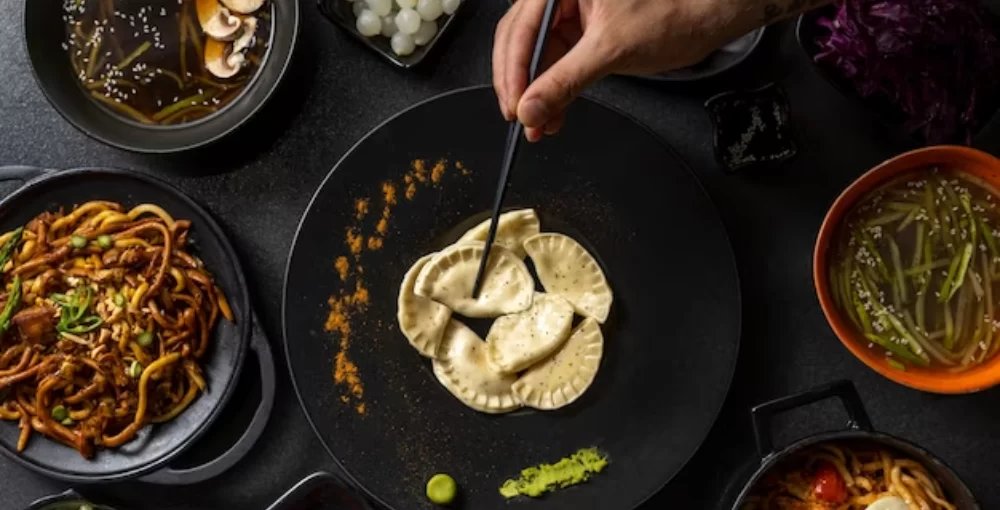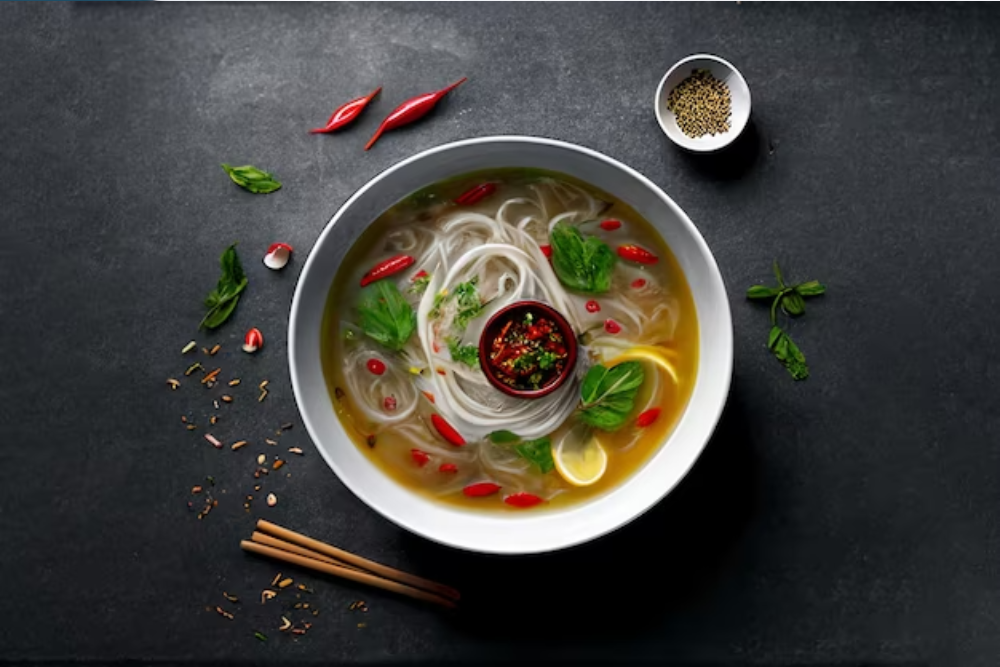Asian cuisine is a tapestry of flavors, textures, and traditions that has captivated palates around the world for centuries. Behind every iconic dish lies a fascinating history, rooted in culture, trade, and innovation. Join us on a culinary journey as we uncover the rich origins of classic Asian dishes that have stood the test of time.
Sushi: Japan’s Edible Artistry:
Sushi, with its delicate balance of flavors and meticulous presentation, is a beloved culinary art form that originated in Japan. Originally, it was a preservation technique in which fish was fermented with rice and salt. Over time, this technique evolved into the sushi we know today. The Edo period saw the emergence of nigiri sushi, where fish was placed atop small mounds of vinegar-seasoned rice. Sushi’s journey from practicality to haute cuisine showcases Japan’s respect for nature’s bounty.
Dim Sum: China’s Bite-Sized Delights:
Dim sum, a Cantonese tradition hailing from southern China, is synonymous with communal dining and variety. Its origins can be traced back to teahouses along the Silk Road, where travelers sought nourishment and rest. These teahouses began serving small, flavorful dishes that evolved into dim sum. The bite-sized portions, delicate dumplings, and wide variety of flavors reflect the Chinese philosophy of balance and harmony in both cuisine and life.
Pad Thai: Thailand’s Global Ambassador:
Pad Thai, Thailand’s signature stir-fried noodle dish, is a fusion of flavors that symbolizes the country’s resilience and resourcefulness. Introduced in the 20th century as part of a nationalistic campaign to promote Thai identity, it combines Chinese stir-fry techniques with Thai ingredients like tamarind and fish sauce. Pad Thai’s sweet, sour, salty, and umami elements embody Thailand’s culinary philosophy of balancing flavors for a harmonious experience.
Biryani: India’s Aromatic Masterpiece:
Biryani, a fragrant rice dish cooked with spices and meat, has roots in India’s Mughal history. It was developed as a royal dish, known for its complex blend of spices and the layering technique used for cooking. The dish’s name is derived from the Persian word “biryan,” which means ‘fried before cooking.’ Biryani’s evolution across India led to regional variations, each reflecting the unique culinary influences of different Indian cultures.
Kimchi: Korea’s Fermented Tradition:
Kimchi, Korea’s staple fermented vegetable dish, is more than just food—it’s a cultural icon that connects generations. Its origins trace back to the Three Kingdoms period, when preservation techniques were vital for survival during harsh winters. Cabbage, the main ingredient, was introduced during the Mongol invasions. Today, kimchi represents the Korean spirit of resilience and innovation, as well as the importance of preserving cultural heritage.
Pho: Vietnam’s Noodle Elixir:
Pho, a hearty Vietnamese noodle soup, is a testament to the country’s history of cultural exchange. It was influenced by French colonial rule, which introduced beef and the concept of bone-based broth. Originally a street food, pho has become an international sensation due to its aromatic flavors and comforting qualities. The dish embodies Vietnam’s spirit of resourcefulness, as well as its ability to create something truly unique through the fusion of cultures.
Classic Asian Dishes in Dubai:
Dubai’s cosmopolitan landscape embraces the essence of Asian cuisine through its diverse culinary offerings. Experience the journey of these dishes at prominent Asian fusion restaurants and Asian buffets in Dubai, where the rich histories of these culinary masterpieces are celebrated alongside the city’s modernity.
Classic Asian dishes are not just meals—they’re stories that span centuries, cultures, and continents. Each bite carries a taste of history, innovation, and the shared human experience. Exploring the origins of these dishes not only enhances our appreciation for their flavors but also deepens our understanding of the diverse and interconnected world of Asian cuisine.




